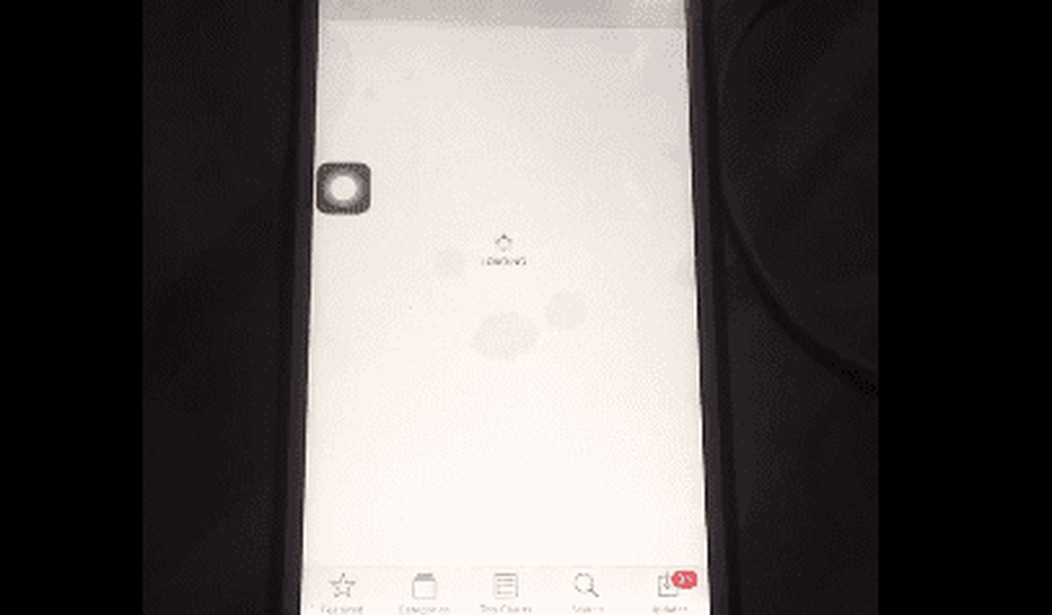Apple has a problem, and they are trying to make it ours.
The touch displays on a large number of iPhone 6 and iPhone 6 Plus models have stopped working reliably and exhibit a flickering gray bar across the top of the screen. Dubbed “Touch Disease,” it’s the number one complaint at Apple Stores, representing about 11% of all iPhone issues. It’s also been detected by independent repair shops. Currently, it’s only been an issue that affects the 2-year old line, the iPhone 6 and 6+, and not the 6S or 6S+.
According to iFixit, one New Orleans repair shop found that up to 100 units a month exhibit this touch issue, and another repair shop owner in Missouri thinks that this is a ticking time bomb that will eventually affect most of this generation of iPhones.
After a prolonged silence, Apple responded this week to the growing number of complaints and blamed the problem on their customers. They claim that it’s caused by an excessive number of times that the phone is dropped on a hard surface by its owner. They have offered to repair the defective iPhone 6+ phones for $149. They have not yet addressed the iPhone 6.
As one who has developed many hardware products, including Apple products, I find Apple’s explanation almost laughable. During development, consumer electronic products go through a battery of industry-standard tests to ensure their product will perform reliably for many years, typically five years or more. Products need to pass testing that drops, vibrates, and exposes them to a range of extreme temperatures and heavy physical abuse. All moving parts are exercised, such as buttons and switches, to simulate many years of use. This is standard practice used by all reputable companies.
For a failure to occur on a 2-year-old product in such a large number of units, it has to be caused by a manufacturing defect, a design defect or a bad part, not by the customer. Such a defect might take a long time to show up, induced perhaps by heavy use, but it should not be blamed on the customer for using the phone in a normal manner.
iFixit, an online site that takes apart products, has analyzed this issue and found that the bonding of one of the chips to the circuit board is prone to failure. The cause could be that the chip wasn’t soldered securely to the board, or that the phone, being so thin, may have flexed over time and loosened the bond. A better design might have been to secure the chip to another more rigid part, such as the back of the display so that it would not come loose, or make the phone stiffer (as Apple did with the S series of iPhones the following year).
What’s the responsibility of Apple? While they provide a 12-month warranty, there’s also an implied warranty of merchantability, meaning we should expect a product we purchase to last a reasonable length of time, and that it is fit for the general purpose for which it was sold. When we pay $600 for a phone, we expect it to last more than two years.
A class action lawsuit has been filed against Apple in the U.S. and Canada, accusing the company of covering up this defect and not taking responsibility for fixing it at no cost. The suit further claims that the company concealed “a material design defect that causes the touch screens on the iPhones to become unresponsive.”
The suit goes on to say that, “Apple has long been aware of the defective iPhones. Yet, notwithstanding its longstanding knowledge of this design defect, Apple routinely has refused to repair the iPhones without charge when the defect manifests.”
I doubt that Apple’s position will be sustainable, and there’s a good chance that, as more people become aware of this problem, Apple will eventually perform the repair at no cost. But for now, Apple’s effort to avoid taking responsibility is very disappointing.
Should your iPhone 6+ exhibit this issue, go to this page on Apple’s site for instructions.
You can see what the problem looks like here:








Join the conversation as a VIP Member